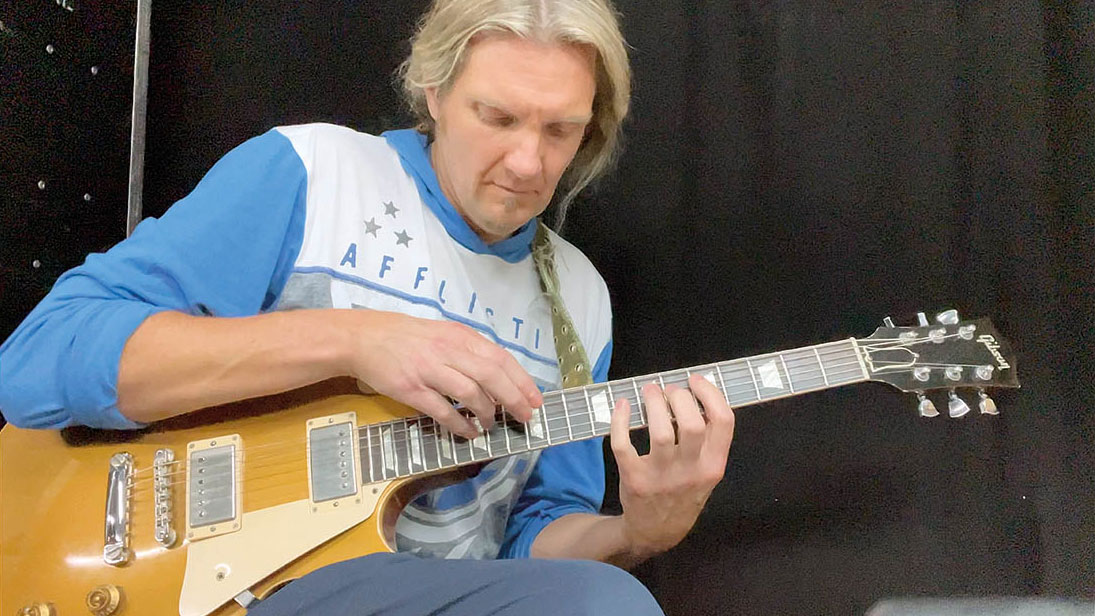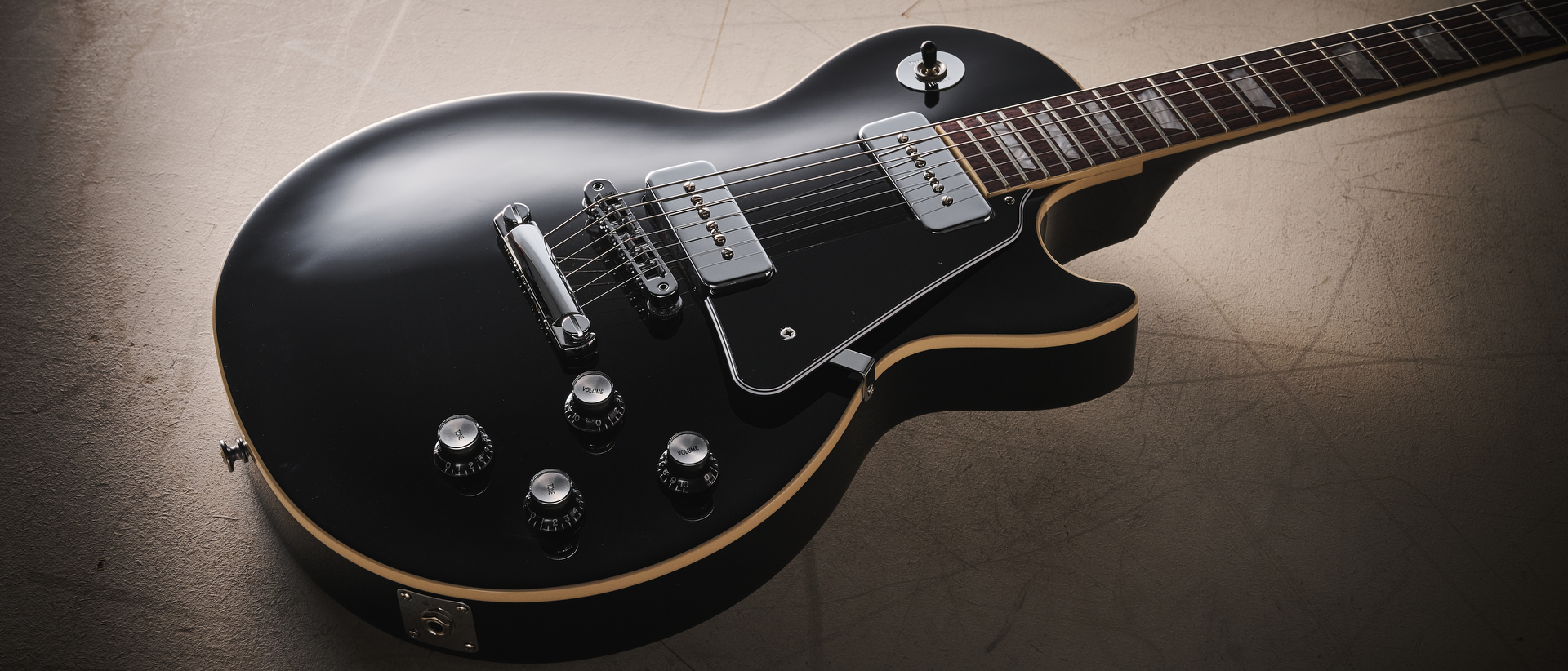Joel Hoekstra video masterclass: learn eight-finger tapping with the legendary Whitesnake guitarist
This lesson is a veritable boot camp for two-handed tapping and will bring you up to speed for those occasions when it is time to let it rip

Guitar Techniques is thrilled to present an exclusive track from Whitesnake, Night Ranger and Trans-Siberian Orchestra rock virtuoso Joel Hoekstra, soloing over Jason Sidwell’s track, Excalibur.
Joel uses the piece to demonstrate his highly sophisticated multi-finger tapping technique. So much so, that there are no picked notes whatsoever throughout the entire piece, each and every note is produced by either tapping with one of what would usually be the picking hand’s digits, by pulling-off to a note being held down by the fretting hand or by occasionally hammering on with the fretting hand, relying upon the impact of string on fret to produce a clearly defined tone.
It’s definitely worth noting that Joel executes all of these techniques with expert control of handling noise and no extraneous open strings ringing whatsoever, without having to resort to using a string mute or fret wrap.
While these devices can be extremely helpful in keeping noise at bay, the downside is that open strings and natural harmonics are not available should you want them, and these are both heavily used approaches in rock guitar styles.
Excalibur is at a medium tempo of 111bpm with the drums giving us a half-time feel. The harmony shifts through a variety of key centres, starting in D minor for the verse, shifting towards G minor for the chorus section. In the solo we modulate to Eb Minor, where Joel showcases some stunning pentatonic intervallic patterns along with some bluesy quintuplet based rhythmic ideas.
We return to the verse melody, although this time transposed to A minor before revisiting the chorus one last time before the final jubilant resolution to the key of G major to close.
Knowing what is around the corner, harmonically speaking, is the single most important factor to keep in mind when negotiating changes, irrespective of style
Naturally, Joel negotiates these key changes gracefully and smoothly, but it’s encouraging to acknowledge that this is a composed piece. It’s clear from the analysis that he gives after the performance that Joel has meticulously mapped out each section and has a definite strategy for negotiating each shift in the harmony, well in advance.
All the latest guitar news, interviews, lessons, reviews, deals and more, direct to your inbox!
Knowing what is around the corner, harmonically speaking, is the single most important factor to keep in mind when negotiating changes, irrespective of style, and it’s really evident that Hoekstra knows exactly where he is in the progression at all times, and so should you.
While you may already be familiar and accustomed to using some tapping in your playing style, perhaps the area that might be new here could be the seamless integration of all tapping fingers, as Joel uses all four fingers of the picking hand (labelled i, m, a, and c), generally locked into a one-finger-per-fret system synchronised with his fretting hand.
Exceptions occur when two consecutive tapping notes are required at the same fret on different strings, such as in the opening bars, or to execute bluesy pentatonic phrases where the first and third fingers in the fretting hand ‘i’ and ‘a’ for the tapping hand are often favoured.
We’re certain there will be new techniques, concepts, phrases, licks and lines for you to learn and incorporate in your playing here. In the analysis video that follows the performance Joel patiently breaks down every section clearly and methodically, so work in conjunction with the transcription and Joel’s video breakdown, approaching this challenging piece patiently, section by section. We guarantee you’ll find tons of new ideas to expand your playing, and also have fun exploring in the process.
Joel Hoesktra’s considerations on two-hand tapping
“Tapping is just one part of my playing and for me is often thrown in for 10 seconds or so during an actual rock song. That said, I used it exclusively for my performance of Excalibur so I’ll explain some aspects that might help you duplicate what I’ve played. First off, I’m using .011-.048 gauge strings with a standard action that is high enough for bending and playing traditional rock guitar.
“However, tapping is often best done with light gauge strings, very low action and a consistent graphite neck, not a Les Paul. The problem with a Les Paul is the toggle switch - it’s in the way for good hand posture.
“I also had to film in landscape but ideally, I would have held the guitar vertically and filmed in portrait. That would get the toggle switch out of the way and allow for a clear view of the fretboard and make it easier for the picking-hand fingers to pull UP when pulling off. That’s very important when multi-finger tapping.
“My ideal tone for tapping is not much distortion with a little compression added in front to even out the levels. If you’re looking for the best way to improve your picking hand hand’s tapping strength, there’s not a better exercise than trilling every finger combination for extended periods of time. This is great to do while watching TV as it’s not exactly the most musical thing to listen to. I also recommend tapping scales with your picking hand.
“I get a lot of questions regarding the fact that I don’t use a wrap to reduce string noise. Well, tapping is just a part of my playing. I’m no tapping expert. All of the muting I do comes from fretting further down the first finger and using the tip of it to mute the neighbouring strings.
“I also extend any unused fingers across the strings at all available times. All of this could be considered dated so by all means, go for the wrap. It would probably help me immensely, but it would be like teaching an old dog new tricks. That said, putting a wrap on and taking it off does take precious seconds when you’re playing so it can be hinderance too.
“For full disclosure, when I worked on my multi-finger tapping it was around 1986. Few people were doing it back then and wraps weren’t even available. In closing, see how you get on with Excalibur with or without a wrap.”
Get the tone
Amp Settings: Gain 7, Bass 6, Middle 5, Treble 5, Reverb 4
Joel used a Gibson Les Paul Standard through a moderately overdriven amp with just a little reverb and delay to add ambience (too much echo will give multiple repeats of unwanted noises, so beware).
Also, the more gain you use, the more handling noise becomes an issues so make sure you’re sounding the notes as cleanly and clearly as possible and use any available digit to mute the idle bass strings.
Chord chart
Video
Joel Hoekstra – Excalibur tab
[Bars 1-17] Our opening verse begins with a root-5th shape tapping figure in the fretting hand, decorated with hammer-ons and pull-offs in the picking hand. We’re outlining G minor moving to D minor, although on the repeat we add an A7 to imply a V7-Im in D minor. Joel mainly sticks to one-fret-per-finger with both hands, unless two consecutive notes are required at the same fret, as you can see in bar 2.
[Bars 18-21] We change the rhythm slightly for the chorus, initially outlining a move between Gm6 (G-Bb-D-E) and D (D-F#-A), with appropriate decoration notes. [Bars 20-25] We change to a sextuplet pull-off figure using a pair of three-note matching voicings in both hands, shifted to outline the chords Cm-Am7b5-D7(sus4b9) to D7.
[Bars 26-33] For the first half of the solo section we modulate to the key of Eb Minor. Joel’s creating tapping patterns here derived from the associated minor pentatonic scales (R-b3-4-5-b7), albeit with the taps tracing out a harmony a perfect 5th higher than the fretted notes, to outline both Ebm (Eb-Gb-Bb) and Bbm (Bb-Db-F).
Pay close attention to the rhythmic patterns Joel employs as these are common rhythmic tools that he often uses in his improvisational and compositional vocabulary. In bars 30-33 things take on a bluesier edge, with a nested triplet quintuplet rhythmic pattern moved through our Ebm-Bbm changes.
[Bars 34-42] Joel adopts an almost Van Halen-like approach here, modified to accommodate his multi-finger tapping technique, using open strings and sticking exclusively to a single string to outline the shifting harmony. He drifts away from this pattern in bars 40-41, adopting the ‘zig-zag’ sixes pattern we saw earlier in the solo, although this time used to outline E7b9 (E-G#-B-D-F). [Bars 43-54] Our second verse shifts up a tone to A minor.
In bars 51-54 we add an extra tag, spelling out Em7b5 (E-G-Bb-D) moving towards A7 (A-C#-E-G), implying a harmonic shift back towards our initial home key of D minor.
John is Head of Guitar at BIMM London and a visiting lecturer for the University of West London (London College of Music) and Chester University. He's performed with artists including Billy Cobham (Miles Davis), John Williams, Frank Gambale (Chick Corea) and Carl Verheyen (Supertramp), and toured the world with John Jorgenson and Carl Palmer.

